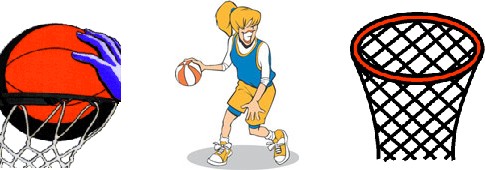Basketball Training
This section of the site is dedicated to basketball training. For basketball players to be incredible athletes, they need to be fast, agile and lean, and they also need excellent endurance and powers of recovery.
A typical NCAA Division I player can complete the 40 yard speed test in 5 seconds and can jump over 70cm in the vertical jump test making them exceptionally powerful and quick . It’s no surprise that strength conditioning and plyometric training composes an important part of elite players’ training. Both strength and resistence training has been consistently shown to improve speed, acceleration and jumping ability.
Other than strength, speed and power, basketball players must possess excellent endurance. A distance runner or cyclist requires excellent low-intensity aerobic endurance, basketball players are expected to repeat multiple high-intensity activities with minimal rest periods. Speed endurance becomes an important factor. Basketball players make some very specific demands on their body. To be truly effective, your basketball training should reflect those demands.
Basketball agility drills will improve your speed around the court, quickness, co-ordination and most importantly your ability to change direction with minimal deceleration.
The best basketball players move with lightening-like speed. But it’s not necessarily the athlete who can run a quick 100M time that makes the quickest player. Much more important in basketball is your ability to rapidly switch between forward, backward, lateral and vertical movements.
Integrating the basketball agility drills within a speed training program can have a dramatic impact on your game. Not only will you be able to move from one end of the court to another much more quickly, you’ll be able to transfer much or all of that energy into other basketball-specific movements.
Peak One Performance can build an individual program for any basketball player seeking solutions to speed, multi directional quickness, strength, vertical jump, and many other physical points of the game. We train agility in two different ways: Pattern and Reactive.
Pattern is following a pre-set outline of where to move and focusing on performing that outline as fast as possible to improve agility. This is necessary for an athlete to form a solid movement base.
Reactive is an open-ended form of agility that requires a response to a stimuli, given by a coach or a workout partner. This form of agility training closely simulates a game situation by eliciting a reactive response.
Below are some links to examples of Pattern and Reactive agility drills.

